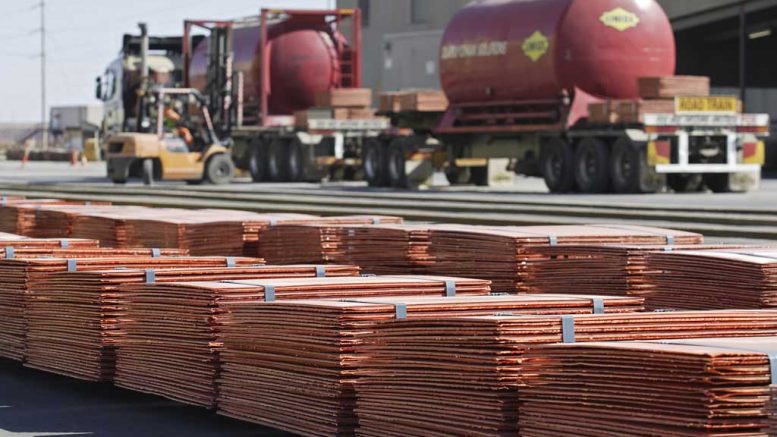A common feature of mining industry gatherings over the past couple of years is a general bullishness on copper’s future, with talk quickly turning to demand for copper being increasingly driven by the rapid adoption rates of copper-heavy electric vehicles (EVs) in Europe, the U.S. and China.
For instance, at the 28th BMO Metals & Mining Conference in Florida in February, attendees voted in an informal poll to declare copper as the “top commodity” for 2019, with most observers at the event predicting mid-term copper deficits.
What hasn’t been cooperating with this rosy sentiment is the actual price of copper, which continues to languish below US$3 per lb. (US$6,613 per tonne) in the spot market. In the futures market, the three-month copper benchmark trades at US$6,455 per tonne.
Copper last traded above US$3 almost a year ago, and copper now trades in the upper range of its five-year chart, well above the dark days of 2016, when prices struggled to keep above US$2 per pound.
A critical story component of the typical bullish copper scenario is that rising copper demand due to growth in the EV market will be met by flatlining — or even declining — mine production, as the world’s largest mines age, head grades fall, and fewer and fewer copper mines come on-stream.
Only the supply end of that equation may yet indeed happen, but it’s not happening right now. The International Copper Study Group’s (ICSG) preliminary figures for 2018 show robust production growth of 2.3% in 2018, with concentrate production rising 2.2%, and solvent extraction-electrowinning (SX-EW), 3.2%.
The ICSG comments that the increase in world mine production of 460,000 tonnes copper in 2018 was “principally due to constrained output in 2017 (mainly in Chile, Indonesia and the Democratic Republic of the Congo [DRC]), and to an unusually low rate of overall supply disruptions in 2018,” and that besides the restart of Katanga’s 300,000-tonne-per-year copper mine in the DRC, no major copper mine started in 2018.
In figures released on April 23, the ICSG found that world copper mine production was essentially unchanged in January 2019 compared to January 2018, with concentrate production remaining flat, and SX-EW increasing 0.4%. On a regional basis, mine production shot up 10% in Africa and 5% in Oceania, declined 4% in Asia and 0.7% in Latin America, and stayed the same in Europe.
Copper production in the DRC and Zambia continues to ramp-up, mainly as a result of the restart of temporarily closed capacity in both countries, in contrast to production in Chile, the world’s biggest copper-producing country, which fell 4%, owing to lower head grades.
In an article in the Financial Times ahead of the copper-mining industry’s flagship CESCO week gathering in Santiago, Chile, in early April, CRU copper analyst Vanessa Davidson urged caution in the face of copper mine and expansion project approvals, such as Anglo American’s Quellaveco project and Teck Resources’ Quebrada Blanca Sulphides project that will only serve to strengthen the copper supply pipeline in the years ahead.
The result, she writes, is that the copper market “looks considerably better supplied in the medium-term than it did a year ago. We at CRU now expect 900,000 tonnes a year more mine supply by the early 2020s than at this time last year, which also had implications for the widely anticipated copper market deficits. In aggregate, we forecast that the shortfall of refined copper production versus demand in the early 2020s has shrunk from 600,000 tonnes a year ago to 200,000 tonnes today.”
CRU also getting more subdued in its mid-term demand outlook, and is now forecasting a slowdown in world copper demand growth from 2.5% per between 2007 and 2018 to 1.9% between 2018 and 2025. Davidson notes that EVs are “a major talking point in the industry, but the consensus is that they will not meaningfully impact on global copper demand until the second half of the 2020s.”
All in all, these are good reasons for miners, explorers and speculators to moderate any enthusiasm for a possible breakout in copper prices in 2019, especially if new copper mine projects continue to be greenlighted.



Be the first to comment on "Editorial: Copper prices remain moribund"